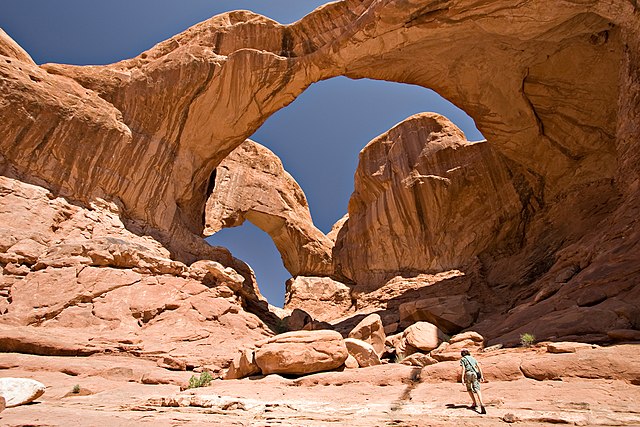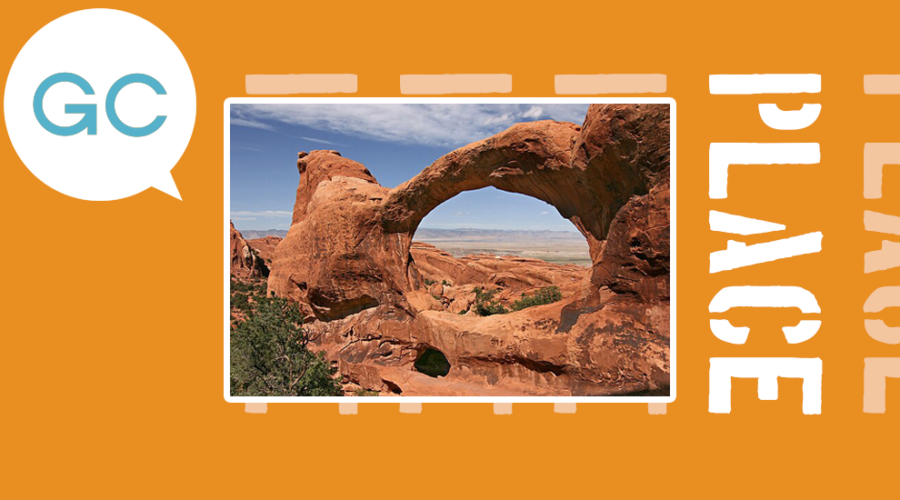Moab sits in a valley surrounded by dreamlike sandstone foundations, with the La Sal mountains towering to the southeast of the city. Arches and Canyonlands National Parks are nearby, as well as petroglyphs and Bureau of Land Management land. The soil under your feet feels ancient and new at once. The stars look so bright and heavy at night that you have to wonder how the sky doesn’t come crashing down.
I normally write this column about television, but who has time for television when surrounded by a landscape like this?
You’re going to tell me that the local residents undoubtedly have time for television, and you would be correct – I find plenty of time to watch TV back home in Colorado Springs, another dramatically beautiful tourist destination.
When a place is new, it overwhelms you.
There is power, however, in being a newcomer. When a place is new, it overwhelms you. Of course you don’t have time for something as mediated and carefully crafted as TV, even really good TV. You are too busy living.
I’m not much of a travel writer at this point in my life, so I’m not going to bore you with a long list of Moab attractions to check out. Suffice it to say that nothing can really prepare a visitor for the dramatism of Arches, or for the perfect simplicity of the Moab Diner. Words are insufficient.
 What I do want to talk about are dinosaurs. Places like Willow Springs Dinosaur Tracks and the Poison Spider Dinosaur Tracksite, among many others, are just a short drive away.
What I do want to talk about are dinosaurs. Places like Willow Springs Dinosaur Tracks and the Poison Spider Dinosaur Tracksite, among many others, are just a short drive away.
The petrified tracks of long-dead animals should not be this haunting, or at the very least, I did not expect them to be.
However, with the world perpetually in crisis and the end of the human race always around the corner, at least according to the internet, I get a chill down my spine when I realize that a species has once dominated this earth, and then disappeared, with tourists like me now tracing its routes while tiny shivers run down our collective spines.
Will the human species drown in history too one day? Million of years from now, will someone else trace our tracks – and whatever else we manage to leave behind – with this endless fascination?
I consider this question in light of other cultures that existed long before the United States of America was created and expanded. There are petroglyphs at Poison Spider, for example, which are attributed to the Fremont People. They lived here, and made art, before the place was ever known as Poison Spider.
A local legend states that a little girl died at the site from a spider bite, thousands of years after the petroglyphs came to be, and millions of years after a dinosaur walked through the landscape. The layers upon layers of stories intersect, but the intersections are hard to pin down and distill into a single narrative.
History itself is not static, but living. It’s places like Moab that most readily reveal this.

Remember me, the dinosaur footprints say. Remember me, say the petroglyphs. It makes me wonder how the people of my time here on Earth will be remembered – will there be awe, or will there be derision? Maybe a little bit of both?
Interacting with ancient history is humbling, and not just because it makes you feel small (although it can be very freeing to feel this way). It’s because ancient history only reveals itself in bits and pieces, it is never whole to the modern eye, nor is it meant to be. My son, for example, told me that he has been thinking about what the dinosaurs were doing when they were making tracks in the area – hunting? Running from the enemy? Enjoying the sunlight and the wind as we have been?
In the gaps between pieces of knowledge, legends and fiction are born. It’s no wonder the American West has inspired so much of it. One of the latest iterations is Netflix’s American Primeval (here I go talking about television, inevitably), which is very bloody and savage when it comes to retelling more recent Utah history, and which I recommend you watch sparingly.
My more important recommendation is just to see Utah for yourself.
Images: Flicka, BLMUtah, Luca Galuzzi

